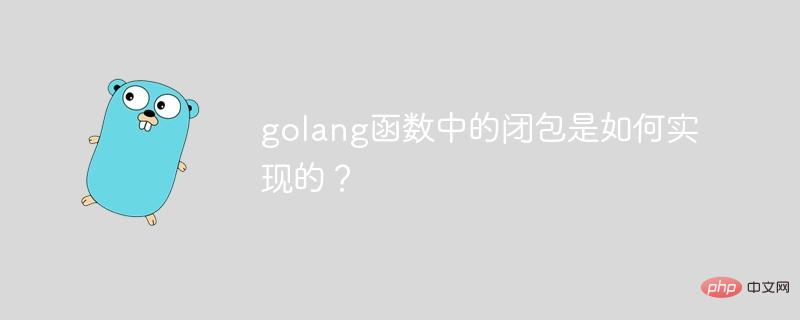Home >Backend Development >Golang >How is closure in golang function implemented?
How is closure in golang function implemented?
- WBOYWBOYWBOYWBOYWBOYWBOYWBOYWBOYWBOYWBOYWBOYWBOYWBOriginal
- 2024-06-02 14:21:56616browse
Function closures in Go are implemented through nested functions, allowing internal functions to access variables in the scope of external functions. The specific steps are as follows: define an external function, receive parameters and return a closure function. Define a closure function to access external function variables internally. Returns a closure function that can still access the outer function variables even if the outer function has returned.

Implementation of function closure in Go
In Go, function closure is a function that allows functions to access its definition Techniques for variables in a domain. It does this by creating a nested function and returning it.
Implementing closures
The following code demonstrates how to implement closures:
func outerFunction(x int) func() int {
return func() int {
// 访问 outerFunction 中的变量 x
return x
}
}In this case, the outerFunction function Returns an anonymous function that can access variables x in the outerFunction function, even if the outerFunction function has returned.
Practical case
This is a practical case using closure:
// 模拟一个累加器,每次调用都会增加计数器
func counter() func() int {
var count int
return func() int {
count++
return count
}
}
func main() {
// 创建一个闭包
c := counter()
// 多次调用该闭包,它将递增计数器
fmt.Println(c())
fmt.Println(c())
fmt.Println(c())
}The output is:
1 2 3
The above is the detailed content of How is closure in golang function implemented?. For more information, please follow other related articles on the PHP Chinese website!

